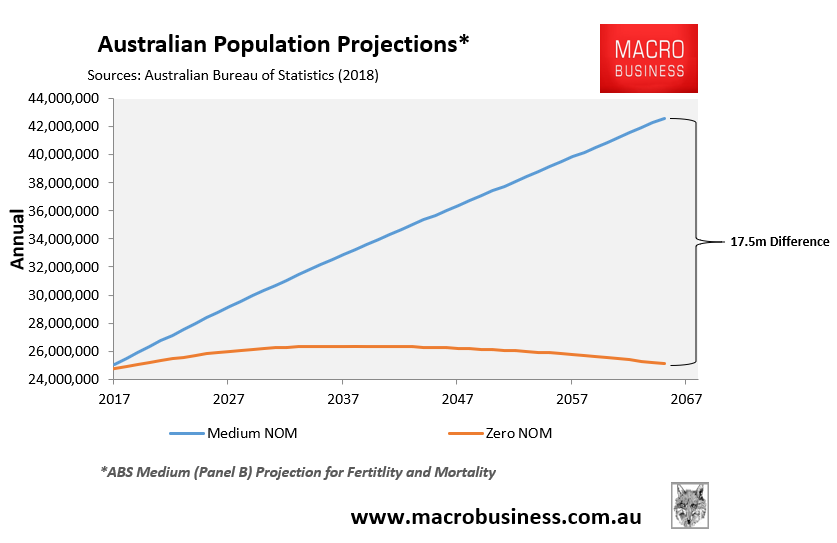Ross Gittin’s and Labor’s Andrew Leigh have lamented the dramatic increase in Australia’s environmental footprint:
Dr Andrew Leigh, a federal Labor politician and former economics professor, is just publishing the paper Putting the Australian Economy on the Scales in the Australian Economic Review.
Leigh estimates that the physical weight of the nation’s annual output of goods and services has gone from 55,000 tonnes in 1831, to 6 million tonnes in 1900, 62 million tonnes in 1960, 355 million tonnes in 2000, and 811 million tonnes in 2018.
Of course, our population has grown hugely in that time, but the weight of output per person is also way up… a 47-fold increase…
[Leigh] estimates that a 10 per cent increase in real GDP is associated with a 12 per cent increase in its weight…
Leigh believes all the rich economies have expanding material footprints. The goods they consume may have been getting lighter per piece, but they’ve gone on consuming a lot more of them…
Leigh concludes that, like the paperless office, the weightless economy remains surprisingly elusive. Which doesn’t change the need for us to put the economy on an ecological diet.
While Andrew Leigh makes good points around consumption, we should remember that he is a big proponent of the mass immigration ‘Big Australia’ policy (for example here, here, and here). This policy caused Australia’s population to balloon by 6.5 million people this century (a 36% increase) and has placed increased pressure on the natural environment.
Moreover, before COVID-19 hit, Australia’s population was projected by the ABS to grow by another 17.5 million in the 50 years to 2067, to nearly 43 million people:

This 70% projected increase in Australia’s population, all driven by mass immigration, would dramatically increase Australia’s environmental footprint.
On this point, Andrew Leigh should consider EcoWatch’s latest article calling on environmentalists to confront the population problem:
A growing body of research shows continued human population growth equates to accelerating species extinction.
A new study finds increasing encroachment of humans into tropical forests and other pristine habitats threatens to destroy about a quarter of the planet’s remaining wildlife habitat in this century, pushing many more species to the brink. Losing these irreplaceable ecosystems would be devastating. And as our numbers continue to soar, humans are rapidly losing the biodiversity we need for everything from regulating pests to carbon sequestration…
Population growth and consumption are two of the major drivers of species extinction, and they are intertwined. Humans put enormous pressure on the environment through mining, grazing, deforestation and other destructive activities, stoked by the global North’s outsized consumption habits. With nearly 8 billion people on the planet and ever-increasing demand from industrialized countries and emerging economies, we’re creating and accelerating twin crises of species extinction and climate change.
It’s a hard issue to talk about. Despite scientific research recognizing humans’ role in driving environmental harms, the need to slow population growth to address environmental damage has rarely been acknowledged and is sometimes deliberately soft-pedaled, even by environmentalists.
…biodiversity loss cannot be oversimplified as either a population growth or a consumption problem — it’s both.
It is hypocritical for economists like Andrew Leigh to pontificate over Australia’s increasing environmental footprint while at the same time championing one of the key drivers of this increasing footprint – population growth via mass immigration.

